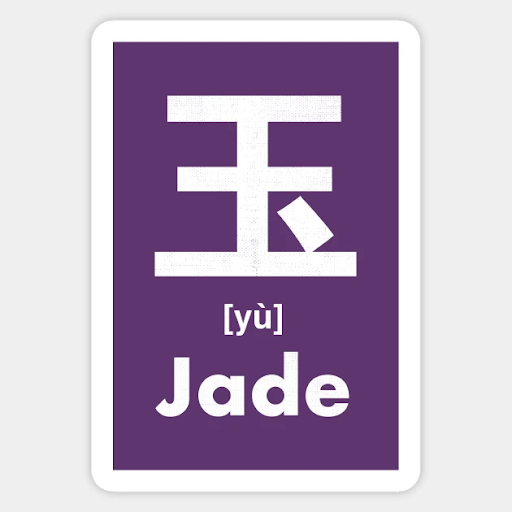When you are writing Chinese characters, and you see the word “Jade”, you can almost always assume the word is a word that represents fortune and luck. Here is why:
This is the Chinese character for jade. If you break this character into two pieces, you will see a short slanted stroke, and three horizontal lines connected by one vertical line (玉). This character (王) means “:king” in Chinese, but the slanted stroke itself is not a character. The slanted stroke represents jade on a king, and things worthy of a king are basically all good things, that is why whenever the Jade character appears in another character, that other chara-cter is almost guaranteed to be a good or happy word.

Jade minerals were treasured for their beauty, hardness, durability, magical qualities, translucent color, and pro†ective qualities. The Chinese believed that jade represented the soul, immortality, celestial beings, authority, and status. They also believed that jade with gold symbolized heaven.
The most famous uses of jade were the Six Ritual Jades. The Six Ritual Jades included the bi, the cong, the huang, the hu, the gui, and the zhang. The bi, which was a flat disk with a hole in its center, represented the heavens. The cong, which was a prismatic tube, represented the earth. The huang, which was a flat, half-ring pendant, represented the north. The hu represented the west, the gui, which was flat and bladelike, represented the east, and the zhang represented the south. Although this is what later writers thought the jades represented, we still cannot be sure whether or not this is historically accurate. . 🙂


发表回复
要发表评论,您必须先登录。